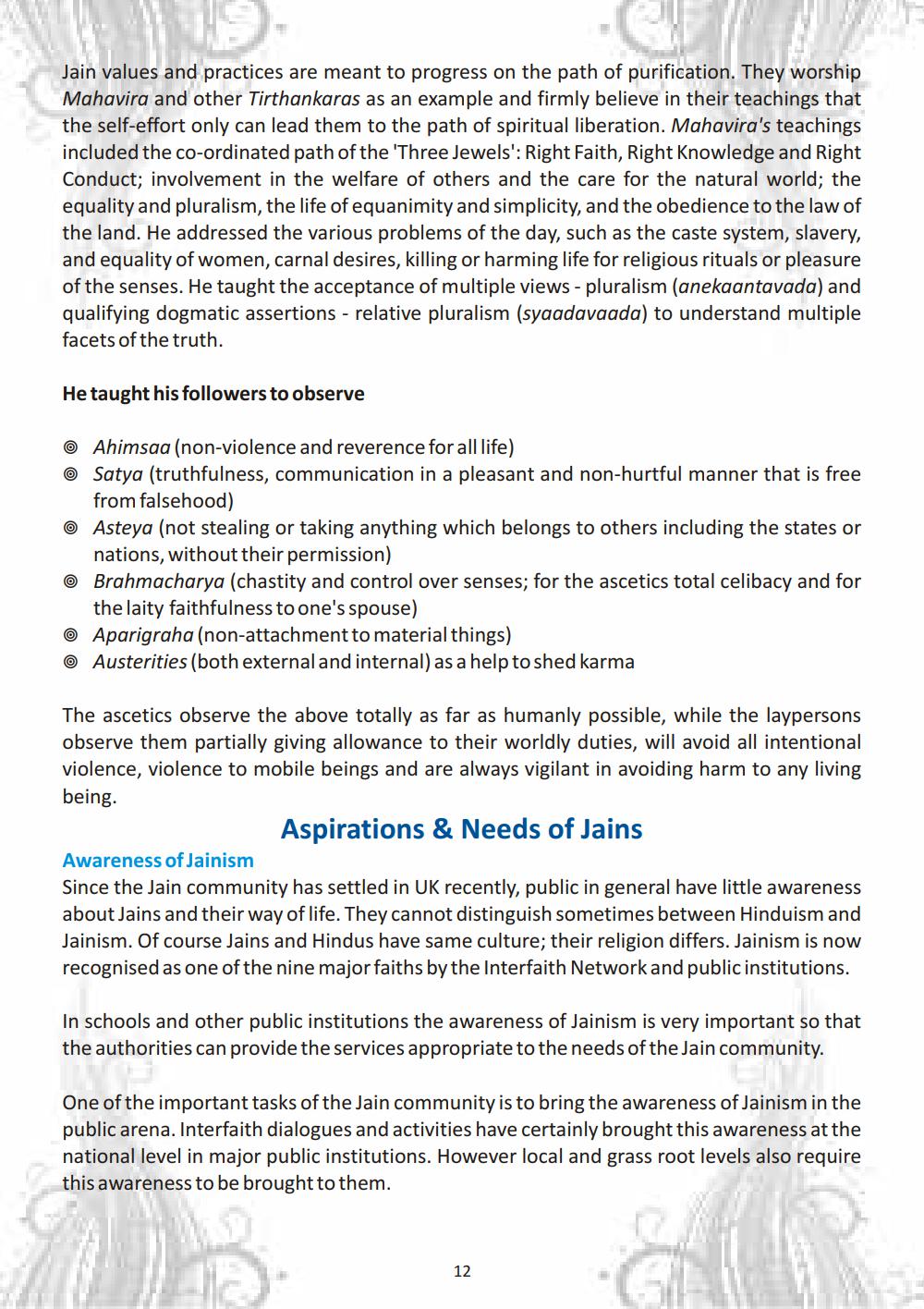Book Title: Jain Network 2010 11
Author(s): Natubhai Shah
Publisher: UK Jain Network
View full book text
________________
Jain values and practices are meant to progress on the path of purification. They worship Mahavira and other Tirthankaras as an example and firmly believe in their teachings that the self-effort only can lead them to the path of spiritual liberation. Mahavira's teachings included the co-ordinated path of the 'Three Jewels': Right Faith, Right Knowledge and Right Conduct; involvement in the welfare of others and the care for the natural world; the equality and pluralism, the life of equanimity and simplicity, and the obedience to the law of the land. He addressed the various problems of the day, such as the caste system, slavery, and equality of women, carnal desires, killing or harming life for religious rituals or pleasure of the senses. He taught the acceptance of multiple views - pluralism (anekaantavada) and qualifying dogmatic assertions - relative pluralism (syaadavaada) to understand multiple facets of the truth.
He taught his followers to observe
© Ahimsaa (non-violence and reverence for all life)
Satya (truthfulness, communication in a pleasant and non-hurtful manner that is free
from falsehood) © Asteya (not stealing or taking anything which belongs to others including the states or
nations, without their permission) © Brahmacharya (chastity and control over senses; for the ascetics total celibacy and for
the laity faithfulness to one's spouse) Aparigraha (non-attachment to material things) Austerities (both external and internal) as a help to shed karma
The ascetics observe the above totally as far as humanly possible, while the laypersons observe them partially giving allowance to their worldly duties, will avoid all intentional violence, violence to mobile beings and are always vigilant in avoiding harm to any living being.
Aspirations & Needs of Jains Awareness of Jainism Since the Jain community has settled in UK recently, public in general have little awareness about Jains and their way of life. They cannot distinguish sometimes between Hinduism and Jainism. Of course Jains and Hindus have same culture; their religion differs. Jainism is now recognised as one of the nine major faiths by the Interfaith Network and public institutions.
In schools and other public institutions the awareness of Jainism is very important so that the authorities can provide the services appropriate to the needs of the Jain community.
One of the important tasks of the Jain community is to bring the awareness of Jainism in the public arena. Interfaith dialogues and activities have certainly brought this awareness at the national level in major public institutions. However local and grass root levels also require this awareness to be brought to them.

Page Navigation
1 ... 10 11 12 13 14 15 16 17 18 19 20
